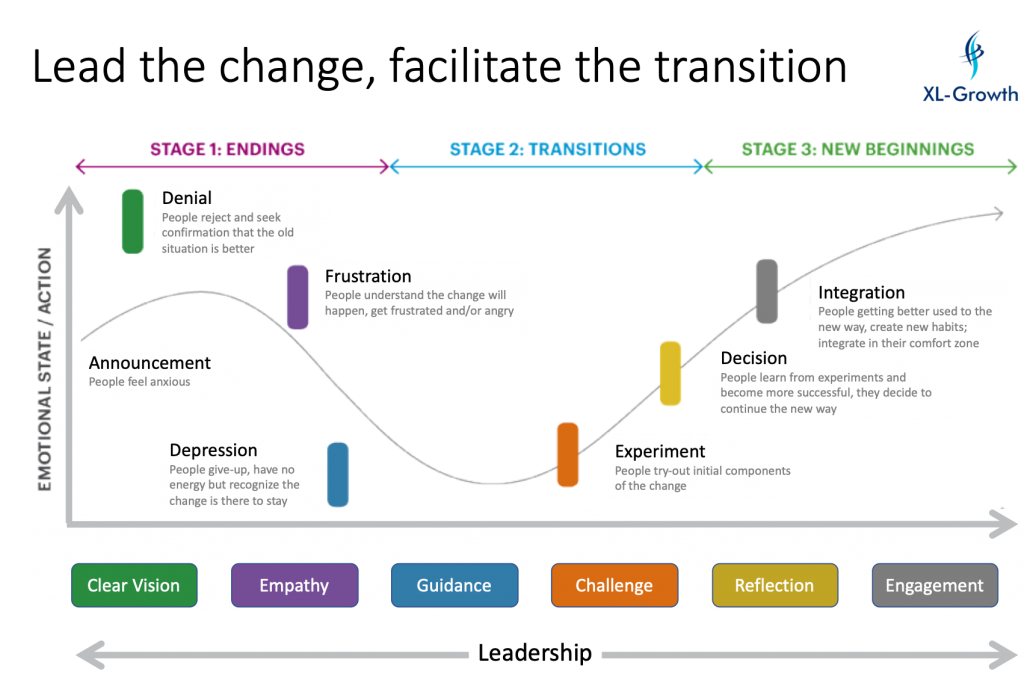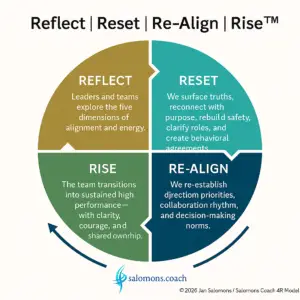A new formula for change

Don’t we all wish to have this? A way to approach change in organizations that guarantees success? We know better. And also, this is an approach for leaders to guide people through change in a VUCA world.
Wouldn’t it be wonderful if there was a formula that guaranteed successful change? A single model that ensured every transformation, every reorganization, every new strategy lands exactly as planned? We all know the answer — it doesn’t exist. But over decades of leading, designing, and coaching organizational change, I’ve discovered there are patterns that always apply. When we recognize these patterns and address them deliberately, the likelihood of success increases dramatically.
The formula for successful change
A simple way to capture this is through what I once called my “change formula” — a symbolic way of describing the essential ingredients for sustainable transformation:

Cs Successful Change is accomplished when people have integrated the change into their comfort zones, which is created by:
- Vs – shared vision: without a clear shared vision, efforts to change are not aligned or focused. Everyone might be moving fast, but not necessarily in the same direction.
- Us – sense of urgency: people need to feel why change matters. Urgency ignites the will and energy to act.
- Lt – transition leadership: leaders must be capable of guiding their teams through transition — not only managing projects, but leading people through uncertainty.
- Cc – change capacity: the organization’s ability to absorb and adapt to change must be intentionally developed and maintained.
- Le – learning from experience: engagement starts with participation. People learn through action, not through PowerPoints.
This formula may look tidy, but real change rarely is. Organizations are living systems — made up of human beings, each with their own fears, motivations, and histories. As I wrote in Leading in a VUCA world, complexity is not something to eliminate, but something to navigate. Change is emotional before it becomes operational.
Change versus transition
William Bridges made a powerful distinction that remains timeless: change is what happens externally; transition is what happens internally. When we move to a new house, the change occurs the moment we hand over the old keys and step into the new space. But calling that house “home” takes time. We need to get used to new routines, new rooms, new sounds — and to let go of what we left behind.
It’s the same in organizations. We often design the “move” perfectly — the new structure, process, or strategy — but neglect the transition. People may still feel attached to the old ways, uncertain about their new place, or skeptical about what’s coming next. This is why so many transformations fail. According to McKinsey, over 70% of change programs don’t reach their intended outcomes, primarily because the human transition is not managed effectively.
Understanding the emotional curve of change
Elisabeth Kübler-Ross first described the emotional process people experience when facing loss: denial, anger, bargaining, depression, and acceptance. Bridges translated this into the language of organizational change: endings, transitions, and new beginnings. In practice, these stages overlap and repeat. People let go of the old, experience uncertainty, and slowly embrace the new.

The leader’s role is to help people move through this curve — not by pushing harder, but by creating psychological safety for exploration, confusion, and growth. This connects directly to my article on Fear and trust at work. When fear dominates, people resist; when trust grows, they adapt.
Key leadership actions that support people through change include:
- Communicating a clear and consistent vision.
- Showing empathy for emotions and uncertainty.
- Creating a safe space to express resistance and doubt.
- Encouraging experimentation and reflection.
- Reinforcing new behaviors until they become habits.
In essence, leaders must guide both the task and the transition — balancing structure and empathy.
Change in a VUCA world
In today’s VUCA environment — volatile, uncertain, complex, and ambiguous — change is not a one-time event but a continuous state. Traditional change programs often assume stability will return after implementation, but that stability rarely comes. Instead, leaders must cultivate change readiness — the capacity to stay adaptive, curious, and connected while the ground keeps shifting.
In my work with international manufacturing and logistics organizations, I’ve seen that the most successful transformations don’t happen because of perfect planning. They happen because teams learn how to navigate uncertainty together. They establish feedback loops, share lessons quickly, and build resilience. In other words, they learn how to live and lead inside transition.
How I support leaders and teams through change
In my coaching and facilitation work, I often start with diagnostics — understanding where people are in their transition curve and what emotional patterns are at play. From there, we move into co-creation: designing experiments and actions that make the change tangible. Through iterative reflection and feedback, leaders develop the awareness and tools to sustain new behavior — both in themselves and their teams.
This follows my established way of working: assignment > diagnostics > co-creation <> delivery <> evaluation > hyper care > handover > on-demand support. The <> symbolizes iteration — continuous learning and adjustment. It’s not about pushing a fixed plan but helping organizations evolve through awareness, ownership, and connection.
As explored in Manage yourself to manage time and Strong emotions aren’t the problem — your frame is, real change always starts with self-leadership. The same applies to transition: leaders who understand their own reactions to change can better guide others through it.
Reflection for leaders
Which element of the change formula is strongest in your organization today — and which is missing? Are your leaders managing change, or guiding transition?
Work with me
If your organization is navigating transformation or preparing for one, I help leaders and teams build the capacity to lead change from the inside out. Together, we focus on the human side of transformation — where awareness, trust, and collaboration turn change into learning.




